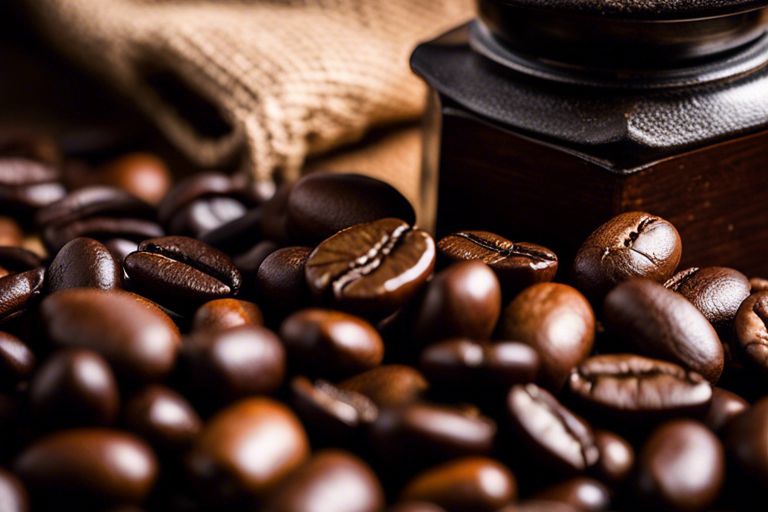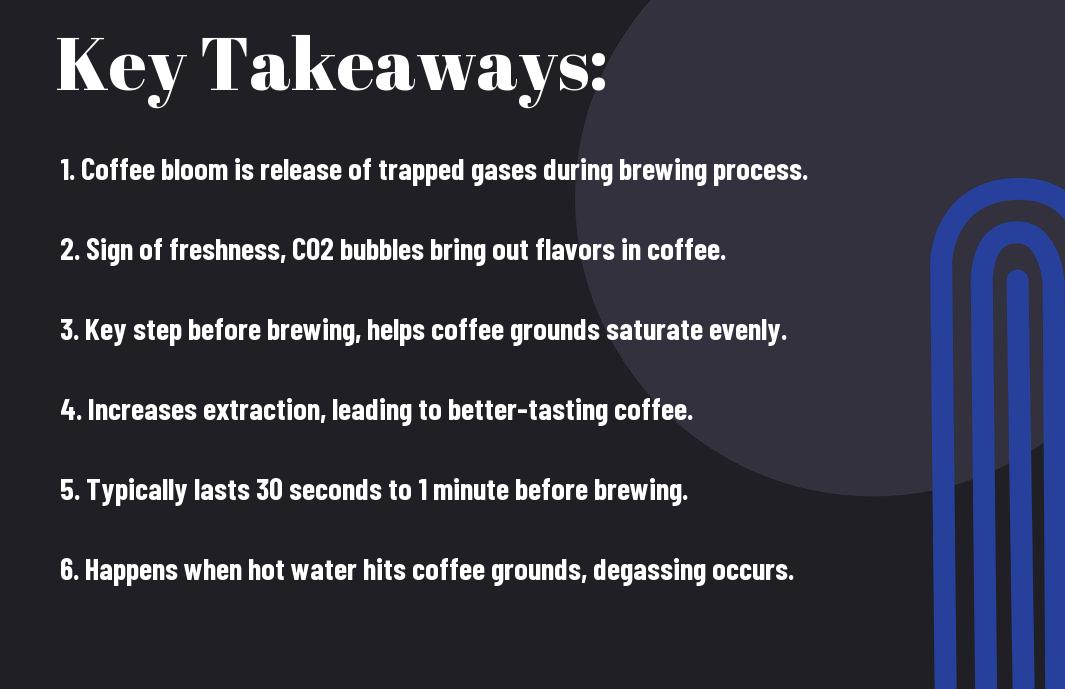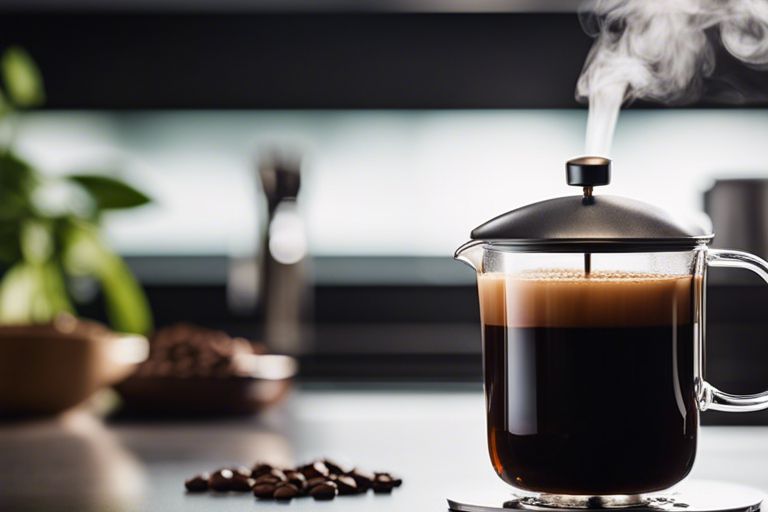Over the years, coffee lovers have sought the perfect cup of brew, with the key lying in the quality of the coffee bean. To determine the top-notch bean, one must look for certain telltale signs. From the aroma that dances from the cup to the sheen of the beans, quality beans possess distinct attributes. To deepen your understanding, you can also learn how to recognize stale coffee, a crucial skill to spot a mediocre bean from a gem.

Key Takeaways:
- Aroma: Quality coffee beans have a strong, fragrant aroma that is rich and enticing.
- Appearance: Look for coffee beans that are evenly roasted, without any signs of oily sheen or discoloration.
- Origin: Beans sourced from reputable coffee-growing regions often indicate a higher quality product.

Visual Inspection
While reading about How To Identify Good Quality Coffee Beans, it’s vital to pay attention to visual cues that can indicate the quality of the beans.
Bean Shape and Size
For coffee enthusiasts, bean shape and size are critical factors in determining quality. High-quality coffee beans are typically uniform in size and shape, which indicates they were grown under favorable conditions. Beans that are too small or misshapen can be a sign of poor quality or defects in the coffee.
Color and Shine
Shape, size, color, and shine all play a role in determining the quality of coffee beans. Pertaining to color, high-quality beans should have a rich, consistent color. Avoid beans that have discoloration or dullness, as this may indicate age or improper processing. Additionally, a good quality coffee bean will have a natural shine to it, suggesting freshness and proper roasting.
When examining coffee beans, look for a deep, vibrant hue and a glossy appearance, which are indications of quality and freshness. Beans that are dull or have uneven coloring may result in a lackluster cup of coffee.

Aroma and Smell
Freshness and Intensity
With coffee, the aroma and smell are key indicators of its quality. Freshly roasted coffee beans will release a strong and enticing aroma that fills the room as soon as you open the bag. The intensity of the fragrance is a telltale sign of the beans’ freshness – the more robust the scent, the more likely the coffee will deliver a flavorful and satisfying brew.
Notes of Fruits, Nuts, or Chocolate
On the quest for a good quality coffee bean, pay attention to the nuanced notes of fruits, nuts, or chocolate in the aroma. These pleasant hints can elevate your coffee experience, adding layers of complexity and depth to each sip. Fruity aromas like berries or citrus, nutty undertones such as almonds or hazelnuts, and chocolaty notes all indicate a well-balanced and high-quality bean.
Smell. It is the gateway to the soul of coffee, revealing its essence and character before your first sip. Take a moment to appreciate the aroma, inhaling deeply to savor the intricate blend of scents that speak volumes about the bean’s origin and processing. A delightful fragrance promises a delightful cup, making the sensory experience of coffee truly extraordinary.
Roast Level and Flavor Profile
Many aspects influence the flavor profile of coffee, including the roast level chosen by the coffee roaster. Light roasts are known for their bright and fruity flavors. These beans are roasted for a shorter amount of time, preserving the bean’s natural acidity and highlighting its complex flavors. Light roasts often have a higher caffeine content and are favored by those who enjoy a more nuanced and vibrant coffee experience.
Light Roasts: Bright and Fruity
Profile: Many aspects influence the flavor profile of coffee, including the roast level chosen by the coffee roaster. Light roasts are known for their bright and fruity flavors. These beans are roasted for a shorter amount of time, preserving the bean’s natural acidity and highlighting its complex flavors. Light roasts often have a higher caffeine content and are favored by those who enjoy a more nuanced and vibrant coffee experience.
Medium Roasts: Balanced and Smooth
Light: Profile: Medium roasts offer a balance between the characteristics of light and dark roasts. They are roasted for a longer time than light roasts but retain more of the bean’s origin flavors compared to dark roasts. Medium roasts have a well-rounded flavor profile, with a balance of acidity and body, making them a popular choice for many coffee drinkers looking for a smooth and flavorful cup of coffee.
Flavor: Many coffee enthusiasts appreciate medium roasts for their balanced and versatile flavor profile. These beans often exhibit notes of chocolate, caramel, and nutty undertones, offering a comforting and familiar taste experience. Medium roasts are a great option for those who prefer a more subdued acidity while still enjoying the complexities of different coffee origins.
Dark Roasts: Rich and Bold
With a longer roasting time, dark roasts bring out bold and rich flavors in coffee beans. These beans have a shiny, oily surface and a pronounced bitterness, with smoky and toasty notes. Dark roasts often have a lower acidity and a full-bodied taste that lingers on the palate. While some may find dark roasts too intense, they are a favorite among those who enjoy a robust and powerful coffee flavor.
Dark Roasts: Rich and Bold
Many coffee drinkers prefer dark roasts for their intense and bold flavor profile. These beans are roasted for a longer time at higher temperatures, resulting in a deep and rich brew. Dark roasts are characterized by their dark color and strong flavor, with notes of chocolate, toasted nuts, and sometimes a hint of smokiness. While not everyone enjoys the strong bitterness of dark roasts, those who do appreciate them for their robust and satisfying coffee experience.
Texture and Density
All How to know if my coffee is good quality? aficionados know that the texture and density of coffee beans can provide vital clues about their quality. When evaluating coffee beans, one important aspect to consider is how evenly they are roasted.
Evenly Roasted Beans
Density plays a crucial role in the quality of coffee beans. A well-roasted bean should be dense and have a uniform texture throughout. To identify evenly roasted beans, look for a consistent color and sheen on the surface. This uniformity is a sign of a meticulous roasting process, resulting in a balanced and flavorful cup of coffee.
Avoiding Beans with Cracks or Breaks
Roasted coffee beans with cracks or breaks are a red flag when assessing quality. These imperfections indicate uneven roasting and can lead to a lackluster flavor profile in your coffee. When examining beans, check for any visible cracks or fractures on the surface, as they can compromise the overall taste and aroma of the brew.
Plus, beans with cracks or breaks are more susceptible to losing necessary oils and flavors during the brewing process, resulting in a less satisfying cup of coffee. It’s best to opt for beans that are intact and free of any structural flaws for a superior coffee experience.
Packaging and Storage
Now let us research into the crucial aspects of packaging and storage when it comes to preserving the quality of coffee beans. The way coffee beans are packed and stored can significantly impact their freshness and flavor.
Airtight Containers and Bags
Any coffee connoisseur knows the importance of storing coffee beans in airtight containers or bags. Oxygen is one of the primary enemies of coffee beans, as it can cause them to oxidize quickly, leading to a loss of flavor and aroma. By keeping coffee beans in airtight containers, you can protect them from exposure to oxygen and help maintain their freshness for a longer period.
Cool, Dry Places Away from Light
Cool and dry places away from light are ideal locations for storing coffee beans. Heat, humidity, and light can all contribute to the degradation of coffee beans, affecting their flavor and quality. By storing coffee beans in a cool, dry place away from light, you can ensure that they remain in optimal condition until you are ready to brew them.
Certification and Origin
Your coffee beans’ certification and origin can tell you a lot about their quality and production process.
Fair Trade and Organic Certifications
One sign of a good quality coffee bean is its certification, such as Fair Trade or Organic. Fair Trade certification ensures that the coffee was produced and traded in a way that is fair to the farmers and workers involved. Organic certification indicates that the coffee was grown without the use of synthetic pesticides or fertilizers, which can result in a purer and more flavorful bean.
Single-Origin vs. Blended Beans
Any coffee aficionado will tell you that the origin of the beans can greatly impact the flavor profile of your brew. Single-origin beans come from a specific region or even a single farm, allowing you to taste the unique characteristics of that particular area. On the other hand, blended beans are a mix of beans from different regions, which can create a more complex flavor profile.
For instance, a single-origin Ethiopian coffee may have floral and fruity notes, while a blend of Central and South American beans may have a balanced flavor with hints of chocolate and nuts. Ultimately, whether you prefer single-origin or blended beans comes down to personal preference and the flavor profile you enjoy in your cup of coffee.
Summing up
From above, identifying a good quality coffee bean relies on various key signs. These include the origin of the beans, the roasting process, the aroma, the flavor profile, and the freshness of the coffee. Knowing these indicators can help coffee enthusiasts and connoisseurs in selecting the best coffee beans for a delightful and satisfying cup of coffee.
FAQ
Q: What are the signs of a good quality coffee bean?
A: A good quality coffee bean can be identified by the following signs:
Q: What is the importance of the origin of the coffee bean?
A: The origin of the coffee bean is crucial as it determines the flavor profile and unique characteristics of the coffee.
Q: How can the roast level affect the quality of the coffee bean?
A: The roast level can significantly impact the taste of the coffee, with lighter roasts showcasing more of the bean’s natural flavors and darker roasts offering a richer, bolder taste.
Q: Why is the freshness of the coffee bean important?
A: Freshness plays a vital role in the quality of the coffee as stale beans can result in a flat and dull flavor profile.
Q: What role does the processing method play in determining the quality of the coffee bean?
A: The processing method can affect the overall taste and aroma of the coffee, with different methods such as washed, natural, or honey processed imparting distinct characteristics to the beans.
What are the best coffee regions in the world









